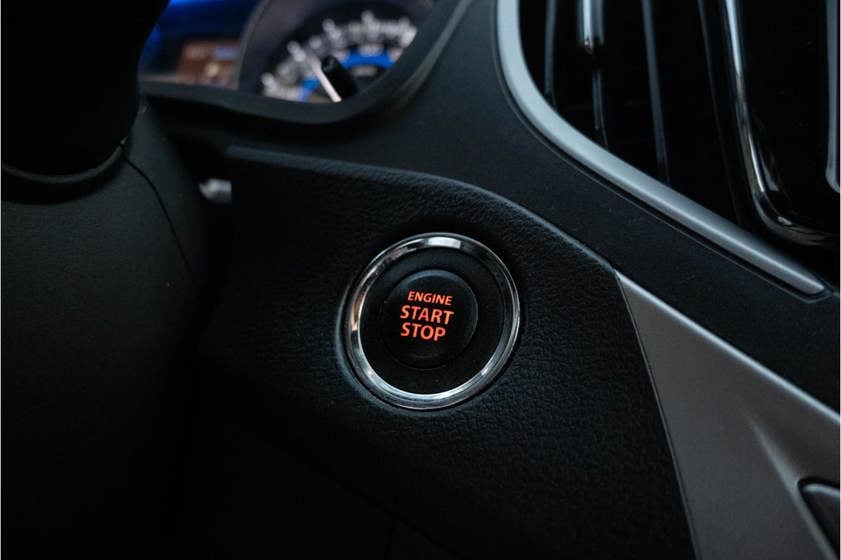
We’re all aware of the responsibility of maintaining your car, however, one thing that goes under the radar is car inactivity.
Whether you’re working away, going on holiday, or working from home for a couple of weeks, you need to consider the dangers of leaving your car and not driving it. After all, cars are meant to be on the road, not sitting in a driveway!
A little bit of maintenance and a driving schedule can go a long way, and it can prevent costly repairs of your car not starting, or even worse, it being damaged.
In this blog, we’ll explore all you need to know about leaving your car, such as how long you can leave it, what to do if you won’t be driving, and what to do if it won’t start. We discuss:

Yes, of course you can leave your car alone. However, it’s worth considering that if you plan on not driving it for a while, a few issues could crop up (which nobody wants).
Picture this: you’ve just come back from a three-week relaxing holiday. You’re up for work the next day, and all of a sudden, there are issues with your car. Reality hits harder than ever, and you need to get back on the road ASAP.
- The most common issue when leaving your car for a long period is the battery. If it sits unused for too long, the battery can drain (especially in cold weather), and unfortunately, your car won’t start.
- Other issues that could occur relate to the tyres. If left for too long, you could come back to flat, rotten, or cracked tyres (depending on the weather). This will put you out of action until you fit a new tyre, which, if you don’t have a spare, could be costly.
- You’ll need to think about rust. If your vehicle is left exposed to the elements for too long, rust and corrosion will start to appear. This could make your car more dangerous to drive and even illegal.
- Finally, fluid degradation is a possibility. If you’ve left (or plan on leaving) your car for an extended period, the fluids and fuel could degrade, leading to mechanical issues when you come to drive! Don’t fuss too much about this one as it’s unlikely, but if it does happen, repairs will be costly.
Before leaving your car, consider a few things: How long will you be leaving it? What will the weather be like? And do you need to drive it straight away when you get home? Taking a bit of time to think things through will be worth your time and will prevent you from stressing when you return.
Time unused | Risk level | Issues |
|---|---|---|
1-2 days | None | Safe |
Up to 2 weeks | Low | Battery may weaken |
2-4 weeks | Medium | Battery, tyre pressure decreases, rust |
More than a month | High | Fluid degradation, mechanical issues |
Like we’ve said above, the length of time you can leave a car depends on various factors such as the car itself, the condition of the battery, where it's stored, and the weather.
As a general rule of thumb, try to drive your car every couple of weeks to keep it in good condition. If you’re going away for longer, ask if friends or family can help by starting your car every so often (they don’t have to drive it).
“Two weeks is a sensible benchmark. That’s usually when flat batteries and early signs of rust and corrosion become an issue, particularly in extreme weather conditions.”

If you’re heading away on an extended break (lucky you) or know you won’t be needing your car for a while, there are a few things you can do to ensure it’s in the best possible condition when you return.
- Inflate tyres properly - Check your tyre pressure before you go away, and if low, top up slightly.
- Fill fuel tank - Fill up your fuel tank with petrol to reduce moisture build-up in the tank.
- Park in shade or cover - If you’ve got a garage, use it. This will prevent any damage to your car from the elements and also keep it safe.
- Clean inside and out - Give your car a clean before going away. This prevents mould from growing and your car being smelly when you get back.
So, you’ve returned from the holiday of a lifetime and want to hit the road. Just to make sure, there are a few things you can do to ensure your car is in a driveable condition:
- Visual check - Do an ocular inspection of the car and look for signs of damage, flat tyres, or rust.
- Start the engine and listen - Start her up again and pay attention. Don’t drive straight away, let the engine run for a minute or two. If everything sounds okay, you should be good to drive.
- Test the brakes - The brakes may be slightly off if you’ve not driven in a while. When you’ve set off, gently press the brakes to ensure all is well.

If the worst has happened, don’t panic. You’re not the first person to get into a car and it doesn’t start, and you certainly won’t be the last.
First things first, see if you can diagnose the issue. If the lights on the dashboard are completely dead, you’ve got a flat battery. If it’s cranking but not starting, it could be a fuel or electrical issue.
Next, don’t force it. You might have somewhere to go, but trying to force the issue won’t help. No offence, but unless you’re an expert, you’ll likely make it worse.
We’d recommend calling for help. If you’ve got a maintenance contract with Nationwide Vehicle Contracts, breakdown assistance is included in your contract (dependent upon finance provider). This removes all the stress and ensures your car is in safe hands.
Issues arising from leaving your vehicle and not driving are completely avoidable. Cars are like humans; they need movement to stay healthy, even if they’re relatively new.
A little bit of attention and thought goes a long way and ensures you avoid expensive maintenance costs.
If you’re looking for peace of mind with your lease car, browse our maintenance contracts (only for Nationwide customers) and enjoy stress-free driving.
Originally posted: 16th May 2025

